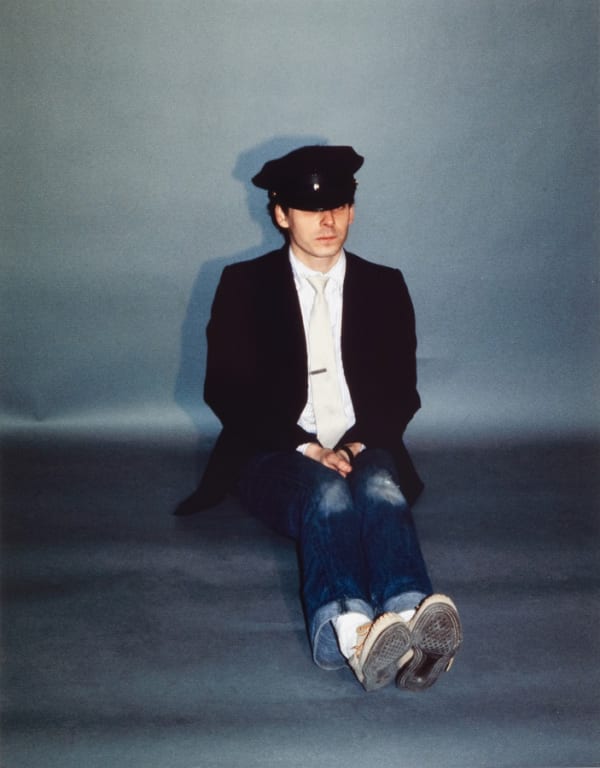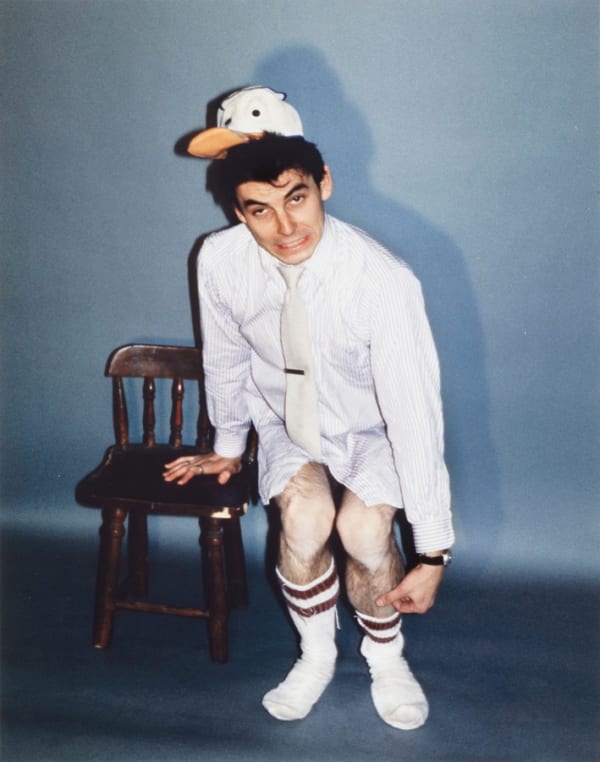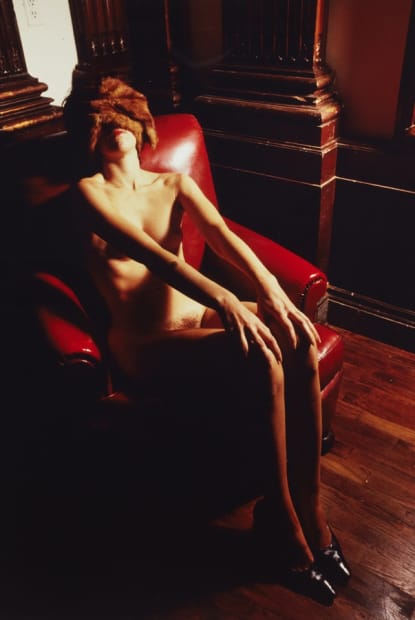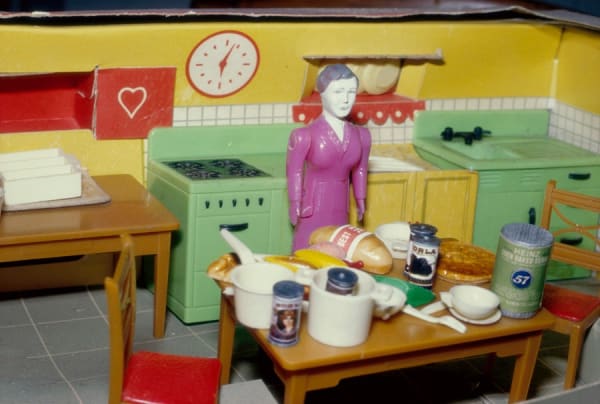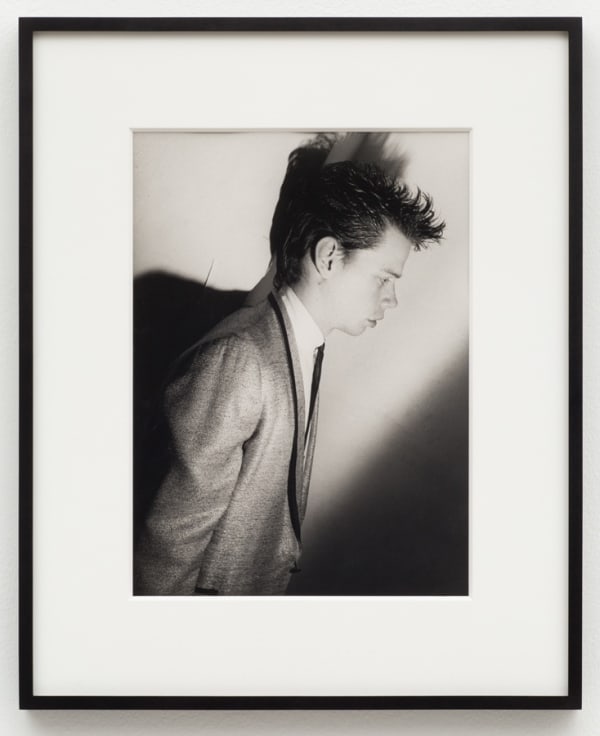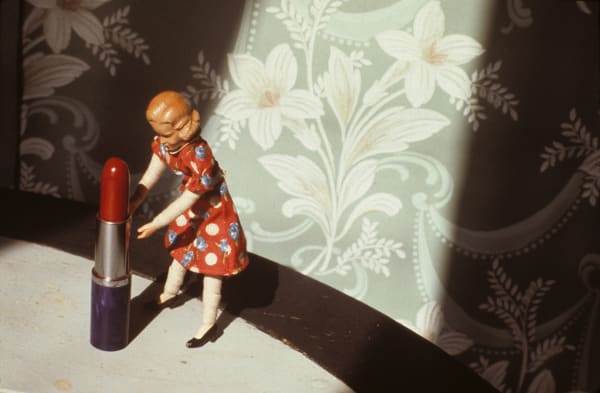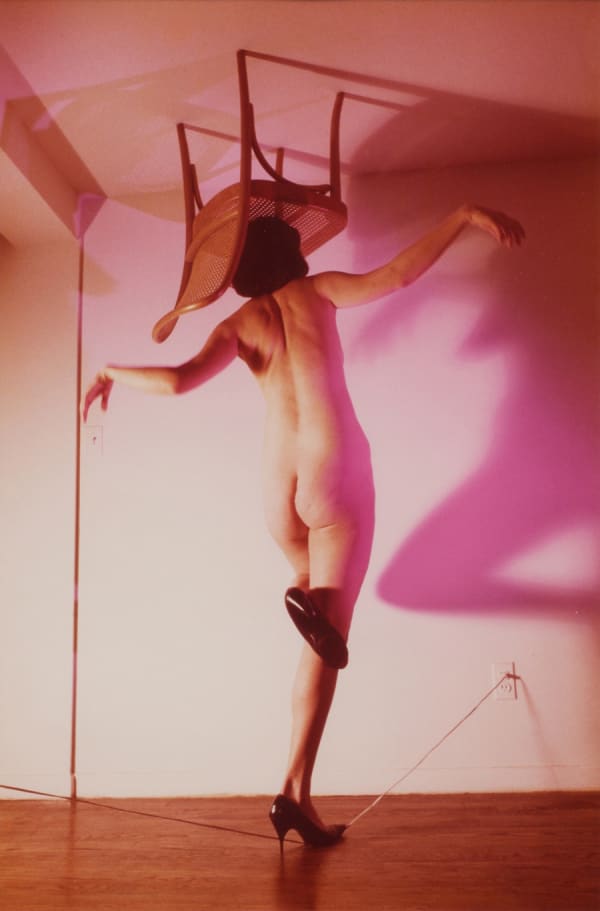-
 Jimmy DeSana Portrait of Laurie Simmons, 1978 Vintage C-print 33 x 48.2 cm Edition of 12
Jimmy DeSana Portrait of Laurie Simmons, 1978 Vintage C-print 33 x 48.2 cm Edition of 12Interview : Laurie Simmons by Amanda Wilkinson
AW I understand you met in 1973, so by 1978 you had known each other for 5 years. Had you taken photographs of each other before, or was this an impromptu idea on the day? Were the photographs taken on the same day in 1978? If so, could you tell me something about that day and how you came to take portraits of each other?
LS I don’t recall the photos being taken on the same day. We sometimes snapped pictures of each other, but I mainly showed up as a model in Jimmy’s photos. Interestingly I don’t know of any photographs of the two of us together. This was obviously way before selfies and though we were both recording our personal lives neither of us had the thought to turn the camera on ourselves when we were together. That is something I definitely regret. Jimmy didn’t put himself in front of the camera very often - at least not in a recognizable way.
-
-

Jimmy DeSana Mink Stole, 1980, Vintage Cibachrome 49.5 x 33 cm
-
AW What facilities did you have in the studio? Did you develop the photographs in a dark room?
LS Jimmy and I had divided up a 200 foot long dark former lingerie factory with windows at each end.
There was a door in the middle that we kept unlocked. We each had our own darkroom. I saw him as a “real” photographer and I was new to the craft so frequently or I should say constantly asked him for help. We used to put ice cubes in the developer in the summer and we shared chemicals and paper.
AW In 1978 you turned to colour photography for the first time with images of the colourful interiors of domestic settings featuring dolls-house furniture. Did Jimmy influence this shift?
My shift was the result of shooting in black and white and realizing that I was seeing everything in color. I wanted to learn about photography and thus the deep dive into shooting developing and printing black and white but my mind was seeing the world as it was and I was choosing props and making set-ups based on color.. That’s why I love the scene when Dorothy gets to Oz and the movie switches to three -strip Technicolor.I felt like that was my life when I started shooting color film in 1978
During this period, Jimmy was making work that was later published in a book titled Submission, with an introduction by William Burroughs. These black-and-white photographs depicted a series of S&M activities staged by Jimmy and his friends. Jimmy went on to make colour photographs the following year that were more playful and humorous, with saturated colour in a suburban setting.
-
-

Jimmy DeSana Refrigerator, 1979
Vintage Black and White Gelatin Print Image size: 24.3 cm
-
AW In an interview with Jimmy published by Art Press for the Pat Hearn Gallery in 1990, you mentioned how few art photographers there were at the time. Could you expand on that a little, and about the way your work was received in 1978?
LS Well there was a generation of women who picked up a camera or used mechanical printing methods that felt different in scale and intention from what I saw going on in the Photo department of MOMA.
It just seemed to be happening.. And there were men too. It was kind of an intuitive thing - even some painters like David Salle and Walter Robinson and Eric Fischl seemed to be working from photography.
And of course women like Barbara Kruger , Nancy Dwyer, Gretchen Bender, Julia Wachtel, Cindy Sherman, Sarah Charlesworth, Silvia Kolbowski and a bit later Lorna Simpson and Carrie Mae Weems and so many others and then some guys like Richard Prince, Frank Majori, James Welling, James Casebere, Chris Williams. The list feels long now but in the late 70’s it felt like a small split from the art history narrative I knew. The other histories seemed so big.
AW Jimmy took many portraits of his friends in the punk scene at the time and has said that he didn’t differentiate between these photographs and his other work – both were drawn from his life and were a part of his art-making. Did your work also draw from personal aspects of your life? – your experience as a woman artist, for instance?
LS Yes! My work was 100 percent drawn from my personal life but I had a hard time admitting it then and felt the need to describe it as a generalized shared cultural experience – at least a certain kind of post WWII American experience.. But then maybe my parents aspirations to lead an ‘American Life’ – a life that looked and felt like what you watched on television or saw described in LOOK and LIFE magazines made the experience of my life feel more general or not wholly like my own.
-
 Laurie Simmons Walking Glove, 1991/2014Pigment print 213.4 x 121.9 cm Edition 5 of 5 + 2 AP
Laurie Simmons Walking Glove, 1991/2014Pigment print 213.4 x 121.9 cm Edition 5 of 5 + 2 AP
Jimmy DeSana and Laurie Simmons Sharing a Studio in 1978
Past viewing_room


